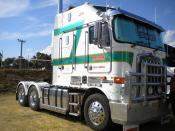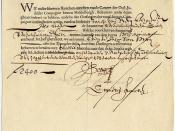Dawson Stores, Inc. (Dawson) needs additional working capital next year. The company would like to obtain a $1,000,000 line of credit, on an unsecured basis from Springfield National Bank (Springfield). The approval of an unsecured loan would be based on the borrower's credit-worthiness. In order to evaluate this, the company provided its financial statements to Springfield for the year 1990 to 1993.
Dawson Stores Inc. is a company which has been experiencing consistent growth in terms of its financial performance. The relevant ratios are as seen in Exhibit A. Its financial ratios show that its return on assets and return on equity are both increasing. This shows that Dawson has been continuously using its assets and equity more efficiently. Furthermore, the decreasing debt ratio and debt-equity ratio imply that the company is relying more on equity (mostly from retained earning) rather than on long-term debts as source of financing.
A possible area of concern, especially for creditors, would be the decreasing current ratio of the company.
This shows that Dawson is becoming less liquid through the years. Although this can be viewed negatively, careful examination of this ratio may provide some light on the strategy being employed by the company. Exhibit B shows major areas of Dawson's cash outflow. As can be observed, Dawson is both decreasing its long-term debts and investing in property, plant and equipment. Without additional paid-in capital and / or increase in long-term debt, it is most likely that these cash outflow resulted to the decrease in liquidity since current assets were used to finance these two major sources of cash outflow. Thus, the decrease of current ratio is a reflection of the company paying its long-term debts and increasing its investments.
These observations have two important implications. First, due to the company's investments and proven...



Nice Job!
This paper is very well written! Easy to read and understand.
Thanks for sharing with us!
0 out of 0 people found this comment useful.